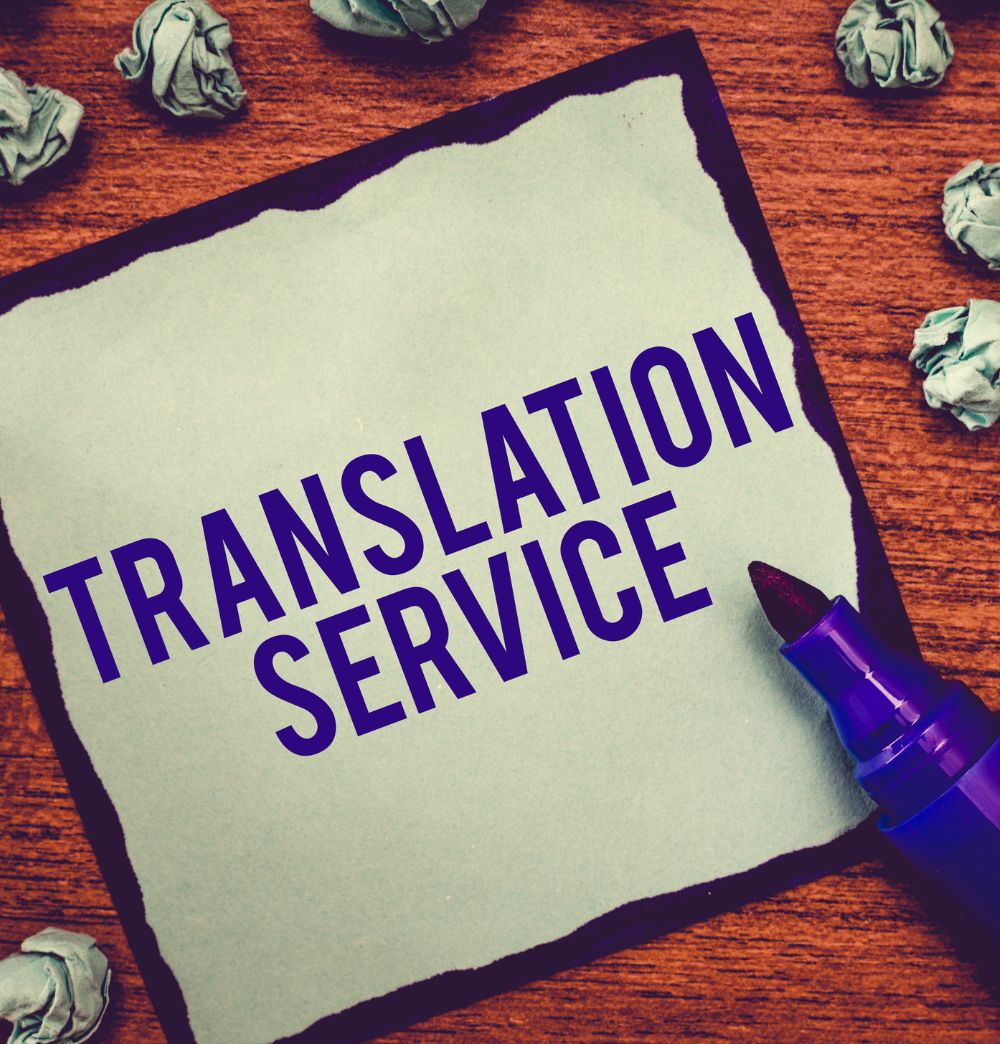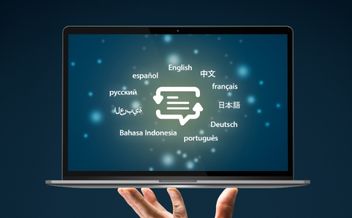Maximizing AI: Strategic Methods Translation Companies Use to Save Money
With Artificial Intelligence (AI) changing the landscape of various industries, it's no surprise that translation companies are jumping on the bandwagon. The question on everyone's mind is, how are translation companies saving money with AI, and how can you do the same? Well, it's quite a fascinating journey, so let's get started.
1. Leverage AI for Automated Translation
First things first, let's talk about how translation companies can save money with AI through automated translation. Now, you may be thinking, "Isn't that putting translators out of work?" — but don't worry, it's not quite that dire.
Automated translation, or machine translation, is an AI-powered process where raw text in one language is automatically translated into another language. It's like having a personal translator at your fingertips — only it's a machine, and it doesn't ask for coffee breaks.
Here's how this strategic method saves translation companies money:
Speed: AI can translate faster than any human translator. This speed means translation companies can take on more projects, increasing their revenue while keeping costs steady.
Scalability: With automated translation, the size of the project doesn't matter. An AI system can handle a one-page document as efficiently as a 500-page manuscript. This scalability allows companies to take on more extensive projects without the need for extra human resources.
Availability: AI doesn't sleep or take days off. It's available 24/7, meaning translation companies can offer round-the-clock service, providing a competitive edge without inflating costs.
That said, the key is finding the right balance. Professional human translators still have a significant role to play, especially in nuanced and culturally-sensitive translations. But when it comes to bulk, generic translation work, leveraging AI can be a game-changer. And who doesn't love a game-changer, especially when it helps translation companies save money with AI?
2. Use AI to Improve Translation Accuracy
Alright, on to our next point of discussion — how translation companies can save money with AI by improving translation accuracy. Yes, you read that right. AI can actually improve accuracy, reducing costly mistakes and revisions. But how, you ask? Let's find out.
AI-powered translation tools, such as neural machine translation (NMT), leverage deep learning algorithms to understand the context and nuances of the source language. This understanding enables them to provide more accurate translations compared to traditional machine translation.
Here's why this matters:
Reducing Revisions: The more accurate the initial translation, the fewer revisions are necessary. This reduction translates (pun intended) into less time spent on each project, hence lower costs.
Maintaining Brand Consistency: Inaccurate translations can harm a brand's image and messaging. By improving accuracy, AI helps maintain brand consistency across different languages and markets, avoiding potential damage control costs.
Enhancing User Experience: Accurate translations lead to a better user experience. Happy clients are more likely to become repeat customers, reducing the resources spent on acquiring new customers.
Avoiding Legal Issues: In some sectors like healthcare, legal, and finance, inaccurate translations can lead to severe legal complications. Using AI to improve translation accuracy can help avoid such costly pitfalls.
So there you have it. By improving accuracy, AI not only saves money for translation companies but also enhances their service quality. It's a win-win, wouldn't you say?
3. Implement AI for Efficient Project Management
Moving on to the next strategy on how translation companies can save money with AI, we're going to talk about project management. Sounds boring? Not when AI gets in on the action!
AI and Project Management: A Match Made in Efficiency Heaven
Just as AI can improve translation accuracy, it can also streamline project management. Sounds too good to be true? Here's how:
Automated Workflow: AI can be used to automate workflows, assigning tasks to translators based on their expertise and availability. This optimizes the project timeline, cuts down on manual labor, and frees up time for your team to focus on more complex tasks.
Real-Time Progress Tracking: Imagine being able to monitor the progress of multiple projects in real-time. AI tools can provide this, allowing project managers to spot bottlenecks and address issues promptly.
Predictive Analytics: AI can analyze past project data to predict project completion times more accurately. This aids in better planning and efficient resource allocation.
Enhanced Communication: AI-powered chatbots and virtual assistants can facilitate seamless communication between team members, improving collaboration and reducing misunderstandings that could delay projects.
The Bottom Line
The key to efficient project management is to work smarter, not harder. And AI, with its ability to automate, monitor, predict, and facilitate, is the perfect tool to help you do just that. Implementing AI in project management is more than just a trend — it's a practical, cost-saving strategy for translation companies. Who knew project management could be so exciting?
4. Utilize AI to Enhance Customer Service in Translation Companies
Taking a slight detour from the heavy lifting of project management, let's shift our focus to an area that's just as important — customer service. Ever wondered how AI can play a role in this? Let's break it down:
AI and Customer Service: Turning Clients into Raving Fans
Customer service is a crucial aspect of any business, and translation companies are no different. With AI, you can take your customer service from good to great. Here's how:
24/7 Customer Support: AI-powered chatbots can provide round-the-clock customer support, answering queries and resolving issues at any time. Forget about the constraints of time zones or working hours; with AI, you're always open for business!
Personalized Experience: AI can analyze customer data to deliver personalized experiences. This could mean suggesting relevant services based on past interactions or even greeting customers by their name. It's all about making your clients feel special!
Quick Response Time: Let's face it: nobody likes waiting. AI tools can speed up response times, addressing customer queries and concerns in a snap. This improves customer satisfaction and fosters loyalty.
Multilingual Support: Being in the translation business, you deal with clients from different linguistic backgrounds. AI can bridge this gap, providing multilingual support to cater to a diverse clientele.
AI, Customer Service, and Your Bottom Line
Great customer service isn't just about keeping your clients happy — it's also a surefire way to save money. Satisfied customers lead to repeat business and referrals, reducing the need for expensive marketing campaigns. So, if you're wondering how translation companies can save money with AI, enhancing customer service should be high on your list!
5. Apply AI for Cost-effective Localization Strategies
Alright, let's now dive into our final topic — localization. If you think translation is all about converting text from one language to another, think again. Localization is a critical step that goes beyond mere translation, adapting content to suit the cultural nuances and preferences of the target audience. Here's how AI can help:
Localization Made Easy with AI
Localization can be a challenging task, but with AI, it becomes a breeze. Here's how AI changes the game:
Automated Content Adaptation: AI can automate the process of adapting content to different locales, saving time and resources. This includes everything from converting units of measurement to tweaking color schemes — all done in a jiffy!
Contextual Understanding: AI tools can understand the context of your content, ensuring appropriate localization. For instance, an AI tool could identify a phrase used in a specific region and suggest a locally preferred alternative.
Cultural Sensitivity: AI can identify potential cultural issues in your content, helping you avoid embarrassing missteps. A harmless phrase in one culture could be offensive in another — AI helps you navigate these tricky waters.
Testing and Validation: Localization is not a one-and-done process — it requires testing and validation. AI tools can test localized content in different scenarios, ensuring it resonates with the target audience.
AI and Localization: A Money-saving Duo
Localization is often seen as a costly process. However, adopting AI can turn this around. By automating tasks and reducing the risk of cultural blunders, AI can help translation companies save money. So, if you're still pondering how translation companies can save money with AI, unleashing the power of AI in your localization strategies is definitely a smart move!



























































